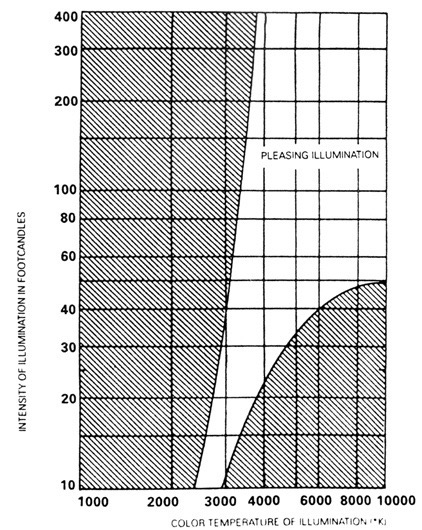My unofficial seat of the pants impression is that most humans I have shown assorted lights prefer cool white. Cool white outsells every thing else by an enormous margin, and in comparisons, almost everyone prefers cool white over the warmer tints.
That doesn't mean EVERYONE of course, but, overwhelmingly, people seem to prefer cool white in general. Assuming most people have "average color vision", that would imply that there is no ADDED preference for cool white by the color blind - as the not-color-blind already prefer cool white by an overwhelming majority.
The only way the color blind could DIFFER is to actually prefer warmer lights.
My gut impression is essentially that except for a few, everyone prefers cool white.
I like neutral white myself, but when I show people assorted lights, they don't pick what I'd pick as much as they pick cool whites.
Now, MOST of my lights are bright, and, no one seems to purposefully choose a dim light to see with...but might prefer a dimmer light to avoid glaring out their night adapted vision at 3 am, etc.
I have NOT done a "dim light" preference comparison....but, others have:
In studies in museum lighting for example, as the higher the lux, the more damage it does to certain artifacts, they want the lighting to be as dim as they can get away with, to help preserve documents, etc.
For art work, etc, they want to show pieces in the most flattering light.
They found that below ~ 5 lux or so, the warmer tints were generally perceived as more pleasant. Above that, the cooler tints were progressively perceived as more pleasant.
I have a chart of this:
Its called the Kruithof Curve.
1 Lux = ~ 0.0929 foot candles
Intensity is on the Y axis and Kº (color temp/tint) is along the X axis.
The white area is the "Pleasing Lighting" range...and, as the chart shows, people prefer the very warm lighting at very dim levels, and, as the light gets brighter, they start to prefer cooler lighting.
By ~ 50 foot candles, they swing to the cool fairly strongly.
This is again used in museums, where people are for example viewing art. The "pleasant" aspect is how they like the art in that lighting.
There is no correction for color vision or lack thereof...its for "average color vision".
--------------------
My INTERPRETATION of all this is that, potentially, those who prefer warmer tints might also be using dimmer lighting in general...as that would help to explain the obvious differences in opinion.
For example, If I have two of the exact same light, except one is an XLM2 and one is a N219, the XML2 might be producing 800 lumens and the N219 closer to 250 L, etc...so, objects perhaps 30 meters away would be dimly lit by the N219, and brightly lit by the XML2.
The guy who has all N219 lights for example, is used to the low output, and, as it IS low output, and, the targets ARE more dimly lit, he WILL find the warmer tint more pleasing...which is of course a cyclic reinforcement that he likes warmer lights, and so forth.
The guy who has all XML2 lights for example is used to the higher output, and, as it IS higher output, and the targets ARE brightly lit, he WILL find the cooler tints to be more pleasing...which is of course a cyclinc reinforcement that he likes cooler lights, and so forth.
If, once you find out you "Like Warmer Tints", you tend to buy warmer tinted lights...and, as they are warmer tinted, they are dimmer, and, look nicer in dim lighting...you will have example after example to teach you that warmer lights are just so much more pleasant, and those who like cooler tints must be defective in some way (Uncouth Barbarians).
If, once you find out you "Like Cooler Tints", you tend to buy cooler tinted lights...and, as they are cooler tinted, they are brighter, so, look nicer in brighter lighting...you will have example after example to teach you that cooler lights are just so much more pleasant, and that those who like warmer lights must be defective in some way (Tint Snobs).
This is a nascent theory I am proposing for consideration amongst the Illuminati here.
:candle:


